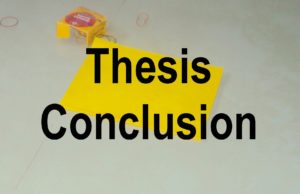Conclusion
By: Engr. Mary Rose Florence S. Cobar, Doctor of Philosophy in Education
Thesis title: “Development of a Source Material in Food Dehydration Craft Technology for the Secondary Schools”
Among the teachers’ knowledge bases (Shulman,1987), pedagogical content knowledge is uniquely their province, their own special form professional understanding and how to impart the learning specifics to their students as adjudge by this researcher will be of primary importance in the diffusion of a new learning concept to its end recipient, the secondary school students . In this research study, the adaptation of the food dehydration process is expected to provide secondary school teachers a degree of ownership in filling up a certain need to expand the students’ acquisition of knowledge that can be applied and practiced.
Although instructional innovations, such as new methods and new materials do reach individual classrooms via the initiative of individual teachers, they are not usually implemented in a coordinated way because many are not actively supported by school managers. It is in this belief that for the Makabayan learning area to be a vehicle of change not only to the students but to the teachers as well, this study concludes that successful management of changes to the instructional environment of schooling requires the re-positioning of teachers as innovators. Therefore, central to the production, implementation and evaluation of new instructional methods is the change in the teacher’s view of teaching and learning. In the case of the Makabayan subject, the teachers became mere implementers of the top-down policy in education. This explains the confusion that happened in the Makabayan learning area.
After the results were analyzed based on the calculated and simulated values from the previous experimental output, this research makes the following conclusions:
a) In the calculated values from the experiments previously performed, there were factors that were not taken into consideration. For instance, when the temperature was lowered, there was still a perceived amount of moisture removed that does not correlate with the simulated percentage removed where it follows the increase and decrease in temperature during the dehydration process.
b) By calculation, the residual moisture left from the test specimen can be attributed to the variance of temperature and heated air velocity within the drying chamber.
The economic aspect or the estimated cost of the modified design of the proposed dehydrator was included in the appendices but the materials of construction will be included in the recommendations. As an innovation, food dehydration craft technology has to be approached from an instrumentalist (adopter-based) perspective, the adopted being the secondary school teachers. Therefore, a manual outline is included to serve as guide in the possible infusion of food dehydration technology into the Makabayan subject. The manual contains experiments that can be adopted and performed with ease by the target recipients of this research study.
 Conclusion is one of most important part of a thesis or research paper. Some thinks that conclusion is place to relax and write whatever you want even though it is not related to your studies. On the contrary, a conclusion should give importance same as the introduction. It is a reminder what you have done and what to expect on your studies. It should not be underestimated after all it is the last part that the reader will remember. Introduction and conclusion is one of the most difficult time to write.
Conclusion is one of most important part of a thesis or research paper. Some thinks that conclusion is place to relax and write whatever you want even though it is not related to your studies. On the contrary, a conclusion should give importance same as the introduction. It is a reminder what you have done and what to expect on your studies. It should not be underestimated after all it is the last part that the reader will remember. Introduction and conclusion is one of the most difficult time to write.